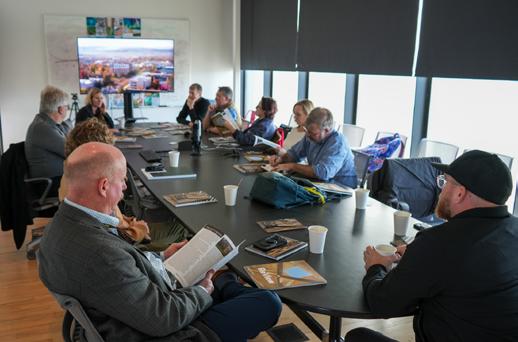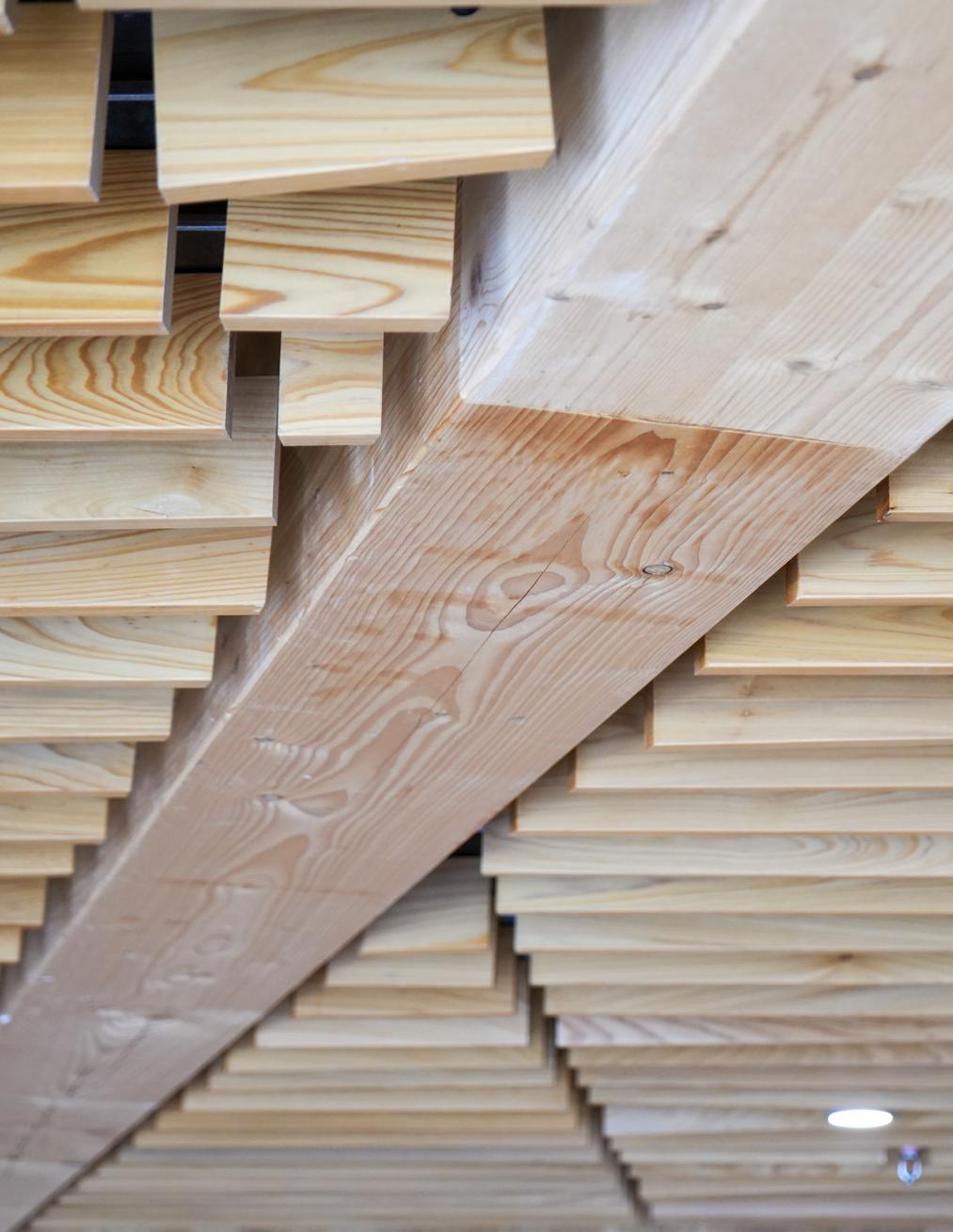
9 minute read
A GROWING RESOURCE
Mass timber provides innovation, solutions in campus design and construction
Two Fay Jones School alumni are working with the University of Florida to plan for a new Integrated Natural Resources Building on its main campus in Gainesville.
Through their Miami-based professional practice, Atelier Mey, Chris Meyer, AIA, and Shawna Meyer, AIA, drew on their own experiences to help University of Florida faculty apply for a Wood Innovations Grant from the U.S. Forest Service in 2022. The grant lead is Scott Sager, assistant director in the School of Forest, Fisheries, & Geomatics Sciences at the University of Florida.
This work, of course, led them to Arkansas, where the Fay Jones School and University of Arkansas are leading the way in the innovative use of timber and wood in campus design and construction and investing in these projects. In February, Chris and Shawna Meyer brought a delegation of University of Florida faculty, staff and administrators, including Sager, to visit the U of A campus in Fayetteville to tour the mass timber buildings on campus.
“There aren’t a lot of places that I’m aware of where you can come see two mass timber buildings and a third building in the works, and sort of talk about everything from the mechanics — what does it look like, what does it feel like, those sorts of things — through the administrative end of things, which are really critical for the project’s success,” Sager said.
Chris explained that there are two core components to the Wood Innovations Grant for the University of Florida project. One is to develop the programming for the new Integrated Natural Resources Building, making the case for regionally sourced mass timber through concept design and preliminary cost estimation. The other component is to educate the University of Florida students, faculty and stakeholders about the potentials of mass timber through lectures, workshops, tours and other community events. The trip to the U of A Fayetteville campus addressed stakeholder education through touring institutional mass timber buildings.
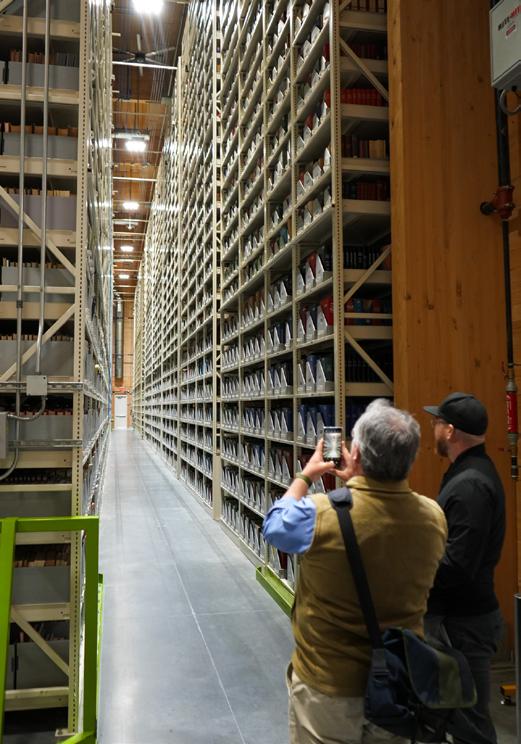
Shawna and Chris returned to the U of A as alumni, with Shawna holding a Bachelor of Science in Architectural Studies and Chris holding a Bachelor of Architecture. After completing their degrees in 2005, they both pursued graduate studies. Following stops in Minneapolis and Boston, they landed in Miami, where they teach at the University of Miami School of Architecture, lead that school’s Littoral Urbanism Lab (LU_Lab) and together founded the architecture practice Atelier Mey.
Through the LU_Lab, Shawna and Chris were able to bring the first Wood Innovations Grant to the state of Florida in 2019 with the mission to create and disseminate mass timber knowledge to the design and construction industries, as well as policy makers and administrators. In parallel to the 2019 Wood Innovations Grant, their practice designed and constructed the first mass timber structure in MiamiDade County using southern yellow pine crosslaminated timber, or CLT.
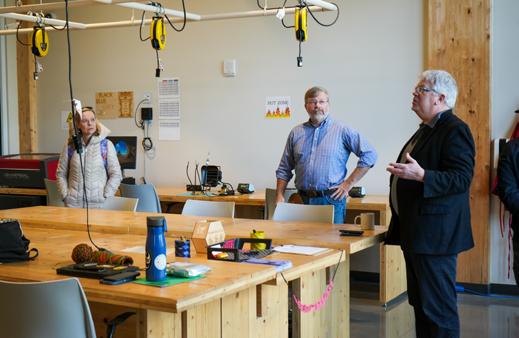
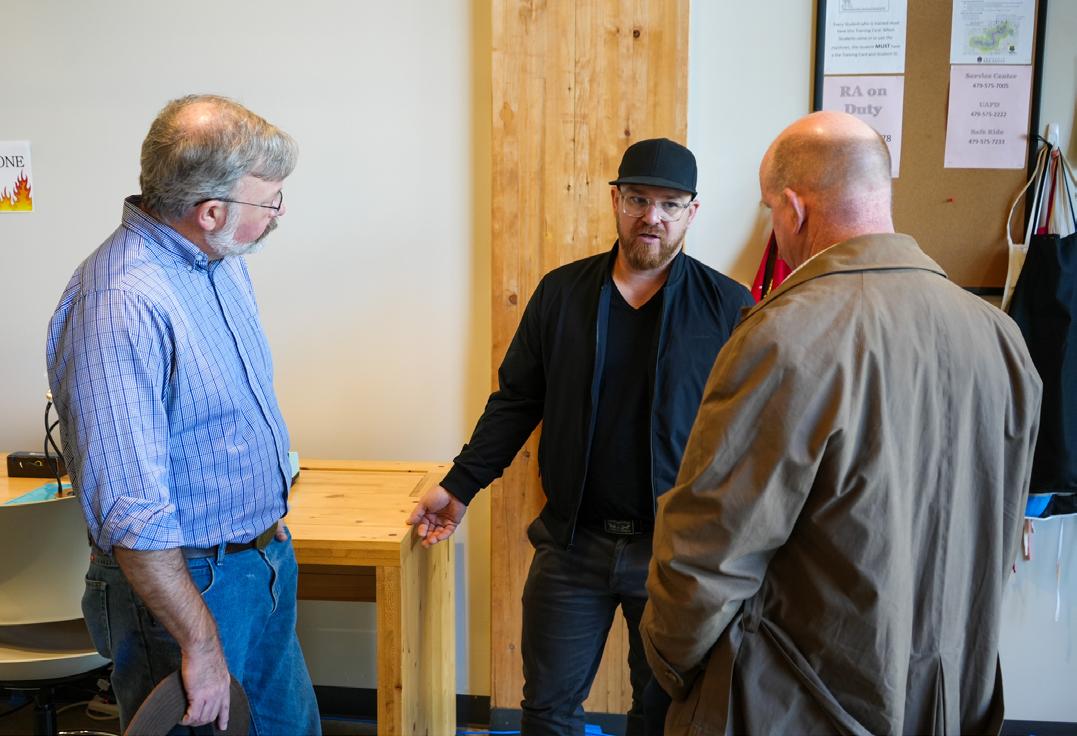
Atelier Mey is committed to sustainable building materials, especially the use of regionally sourced timber, Chris said. Wood is a growing, renewable resource, and using it as a building material is also an investment in the environment. Trees reduce the amount of carbon in the atmosphere by sequestering carbon as they grow, and the trees harvested for timber store that carbon. As a building material, timber also takes less energy to produce than other materials such as steel and concrete.
Chris is an assistant professor at the University of Miami School of Architecture and director of the school’s LU_Lab. Shawna is a lecturer at the University of Miami School of Architecture and project coordinator and research development lead at the LU_Lab.
Through their work at the University of Miami,
Chris and Shawna believe it is important to connect their architecture students to the sources of the building materials they will be responsible for designing with. With the support of a Sustainable Forestry Initiative (SFI) Community Grant, they toured the Austin Cary experimental forest managed by the University of Florida. Students walked through intensively managed pine forests and learned about the process of harvesting, reforestation, land and water management, controlled burns, and the carbon cycles.
That’s where Shawna and Chris Meyer met Sager, and they suggested applying for the federal Wood Innovations Grants program for the Gainesville campus project. They said it made sense to pursue a mass timber facility in a state that is 50% forested and that has an established timber products industry.
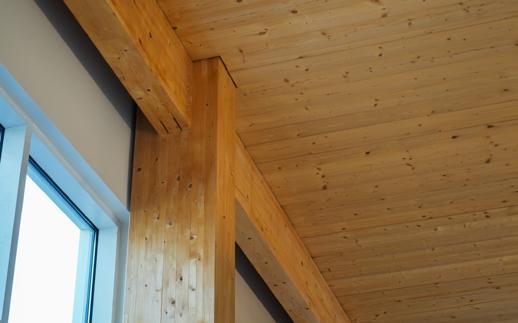
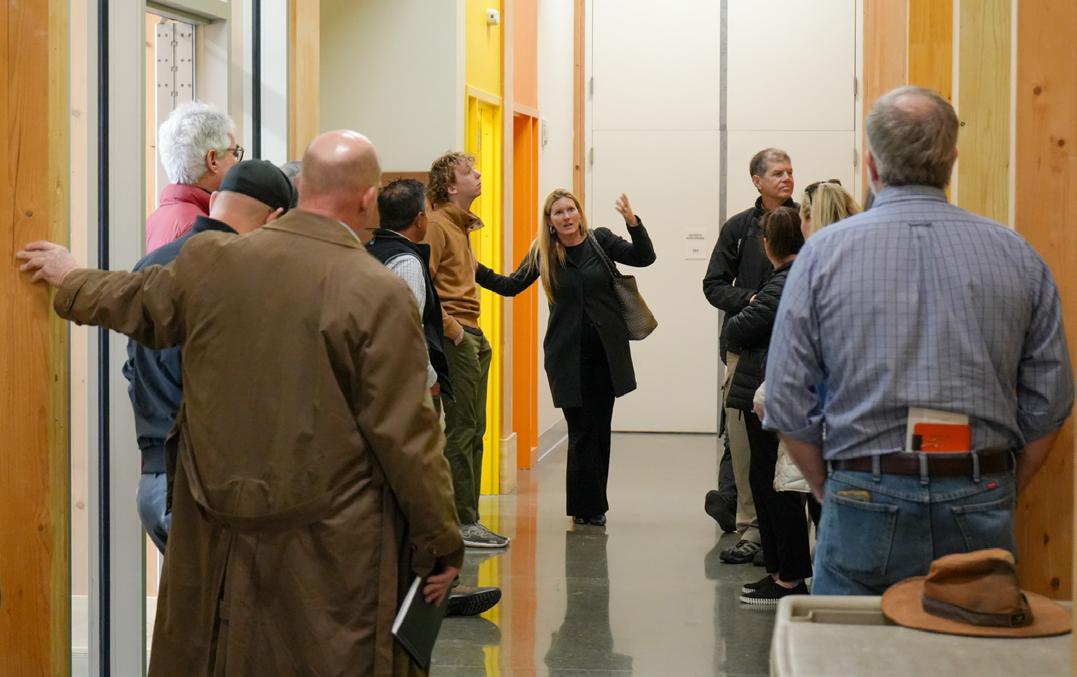
“It would be fantastic to build a natural resource building out of a more environmentally friendly, sustainable, welcoming kind of material,” Sager said. “So, it was a natural fit for us.”
The University of Florida project will mean bringing together seven programs, most of which are within the Institute of Food and Agricultural Sciences (UF/IFAS), that are scattered across several locations on and off the Gainesville campus into a unified facility for the faculty, staff and students of those units, Sager said. The natural resources programs at the university have been contemplating building a new centralized facility for at least two decades to foster collaboration.
A mass timber structure for this new facility would both demonstrate a commitment to sustainability by the programs and place the University of Florida as a leader in the state fostering mass timber industry growth, Sager said.
“I can’t imagine a better building format, when we’re training people how to manage land for natural resource production and preservation. We’re talking about trying to design communities with the environment in mind.”
Finding Inspiration in Arkansas
Not long after Dean Peter MacKeith arrived at the U of A in 2014, he began focusing on wood and timber initiatives. Arkansas is nearly 57% forested, and, like the University of Florida, the U of A has a land-grant mission of service to the state.
In August 2016, the Fay Jones School hosted the “New Languages of Wood” symposium on the U of A campus, as part of the school’s 70th anniversary. The symposium offered presentations of design, education and research in the design and innovation of timber, wood and wood products in architecture and engineering occurring across the country.
Soon after that, the school, in partnership with the Arkansas Forest Resources Center in the UA System Division of Agriculture, received a nearly $250,000 Wood Innovations Grant for a collaborative project. That project, “From Forest to Campus: The
Innovative Timber University,” looked at the viability of campus facilities designed and constructed from mass timber and wood products.
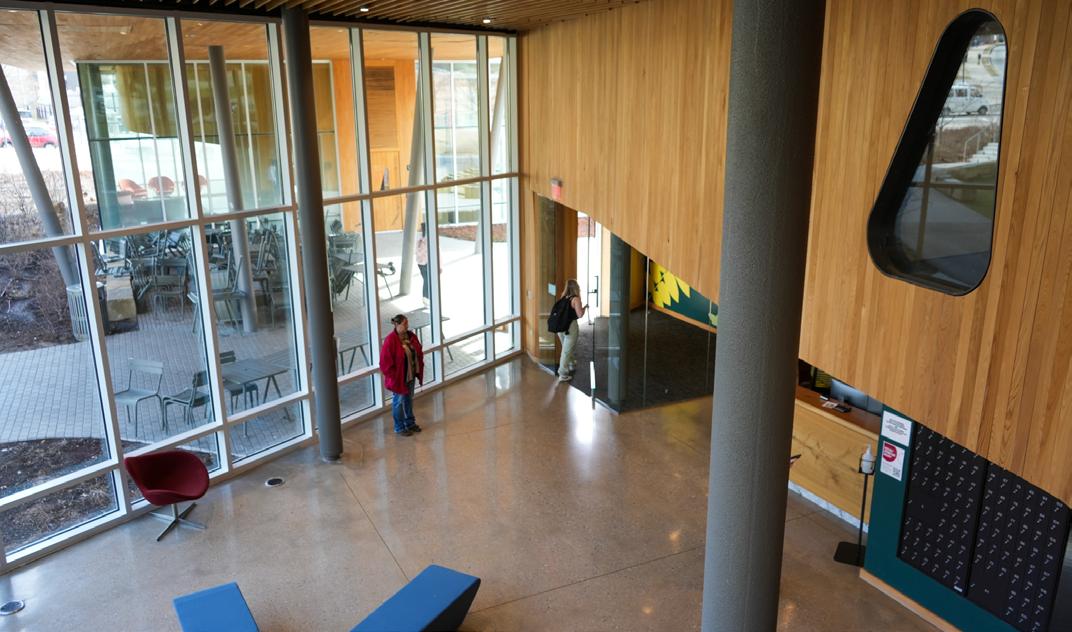
That eventually led to a $250,000 Wood Innovations Grant awarded to the school in 2021 — and matched by funding from the U of A — to be used to establish a Housing Innovation Center at the university. This grant was directed toward the development of sustainable, affordable mass timber housing prototypes for diverse regions throughout Arkansas — simultaneously addressing multiple critical issues in Arkansas, including the need for affordable housing, sustainability, stewardship of the state’s forests and environment, expanded employment opportunities and economic development.
The Florida delegation learned about this body of work when they visited the U of A campus. They also toured the University Libraries’ high-density storage annex, which opened in 2018 as the first structure in the state built with CLT, and Adohi Hall, a livinglearning community residence hall that opened in 2019 as the nation’s first large-scale mass timber residence hall project. They also met with faculty at the Fay Jones School’s Build Lab and the U of A Community Design Center.
The trip to the U of A campus was critical, Shawna said, for their clients simply to experience a mass timber building — many for the first time. Also important were conversations with Fay Jones School leadership about the emphasis the school and university have placed on innovative design and construction practices. She considers MacKeith an “inspiring” champion of such projects.
“There’s a clear agenda, there’s effort behind that agenda, there’s a team behind that agenda, and then there are success stories behind that team,” she said.
“I am sure it is surprising for many people to learn of the innovations and leadership in the world of mass timber occurring at a land-grant state-funded institution located in ‘flyover country,’” Chris said. “The amount of work that has occurred in Northwest Arkansas over the past seven years is notable. Clearly, the University of Arkansas has shown that when you get everyone pulling in the same direction with great leadership, you can accomplish something grand.”
As they toured the U of A facilities, Shawna said, she was struck by the Libraries Annex for its minimalistic, yet functional character.
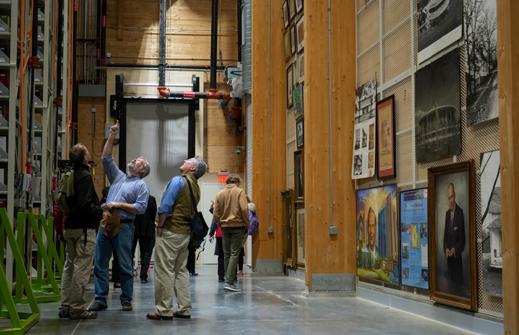
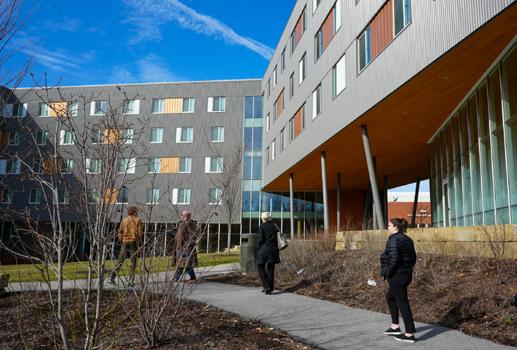
“The building is supremely elegant from the exterior to the interior, and I thought it was a really amazing building. And the fact that it’s a first is even more amazing,” she said.
With Adohi Hall, she was interested to see the various ways mass timber was used in different programmatic spaces, and how the materials can range from having a more industrial feel to possessing a real warmth.
“One of the challenges that Chris and I constantly face is people have preconceived notions of how you can or how you should build with mass timber, and what that means — either from a form of a building or from a program or from a maintenance standpoint. But the versatility, I think, is a really important factor,” she said.
For Sager, seeing these U of A projects was inspiring, informative and encouraging. As he explored the spaces, he experienced the acoustics and aesthetics of the architecture, while understanding the practicalities of maintenance and janitorial needs. All of these details will help him and his colleagues as they develop their building on the UF Gainesville campus.
Ultimately, Sager said, the Florida design and construction community can begin to find inspiration from what happens in Gainesville, and continue to expand the ripple effect.
“That’s what gets me excited about this,” he said. “You guys did this in Fayetteville. That will hopefully allow us to more easily do it in Gainesville. And then, the fact that we can do it in Gainesville, hopefully, means there’s Jacksonville, Orlando or Tampa. It’ll sort of spread and diffuse from there.”
